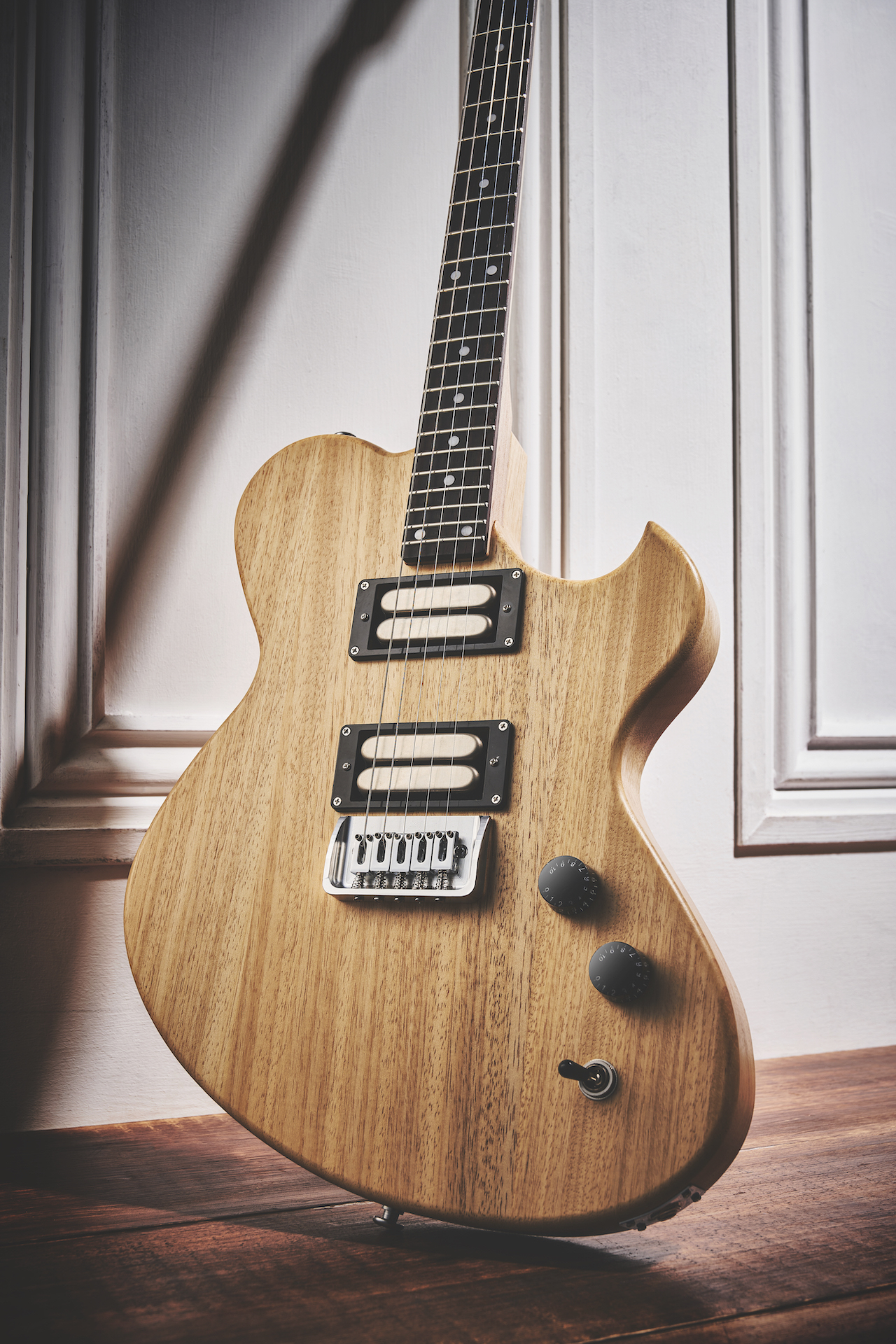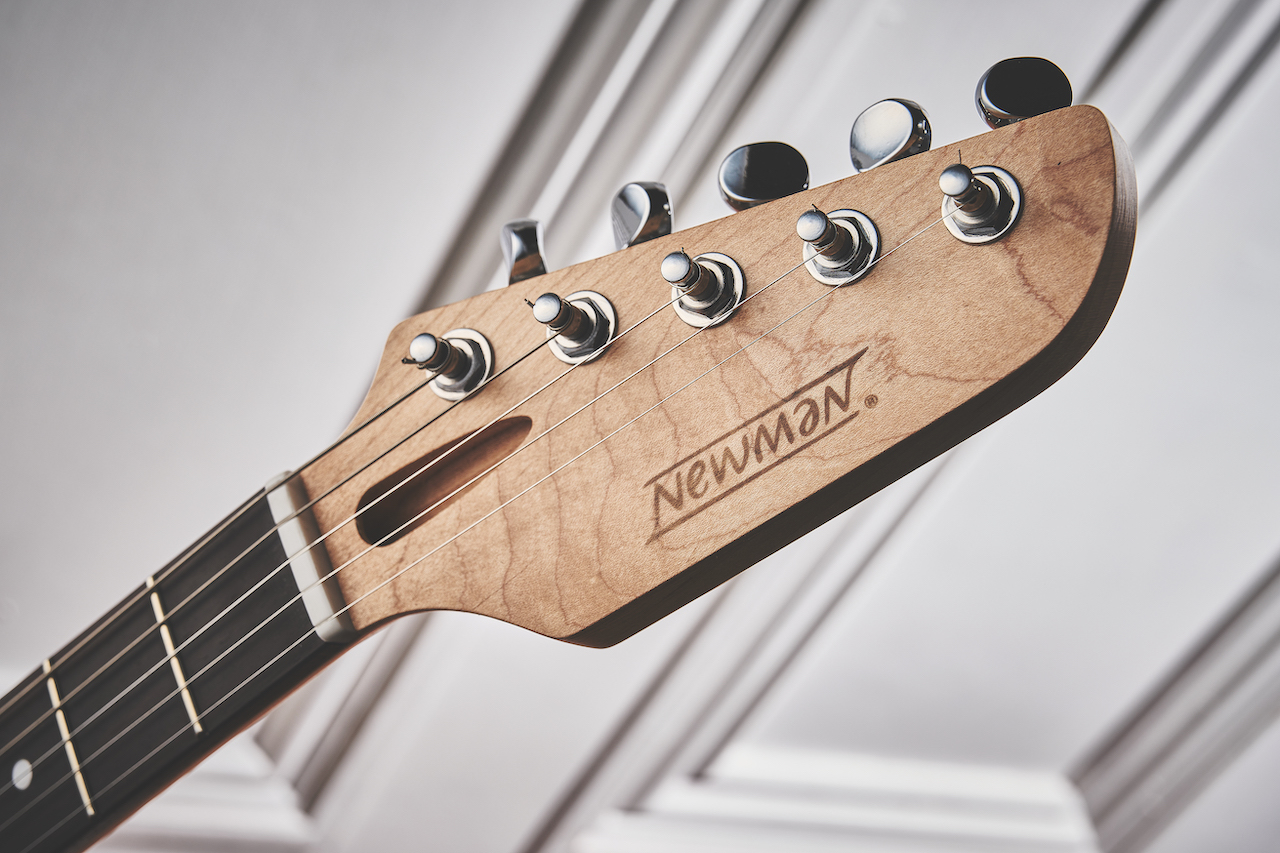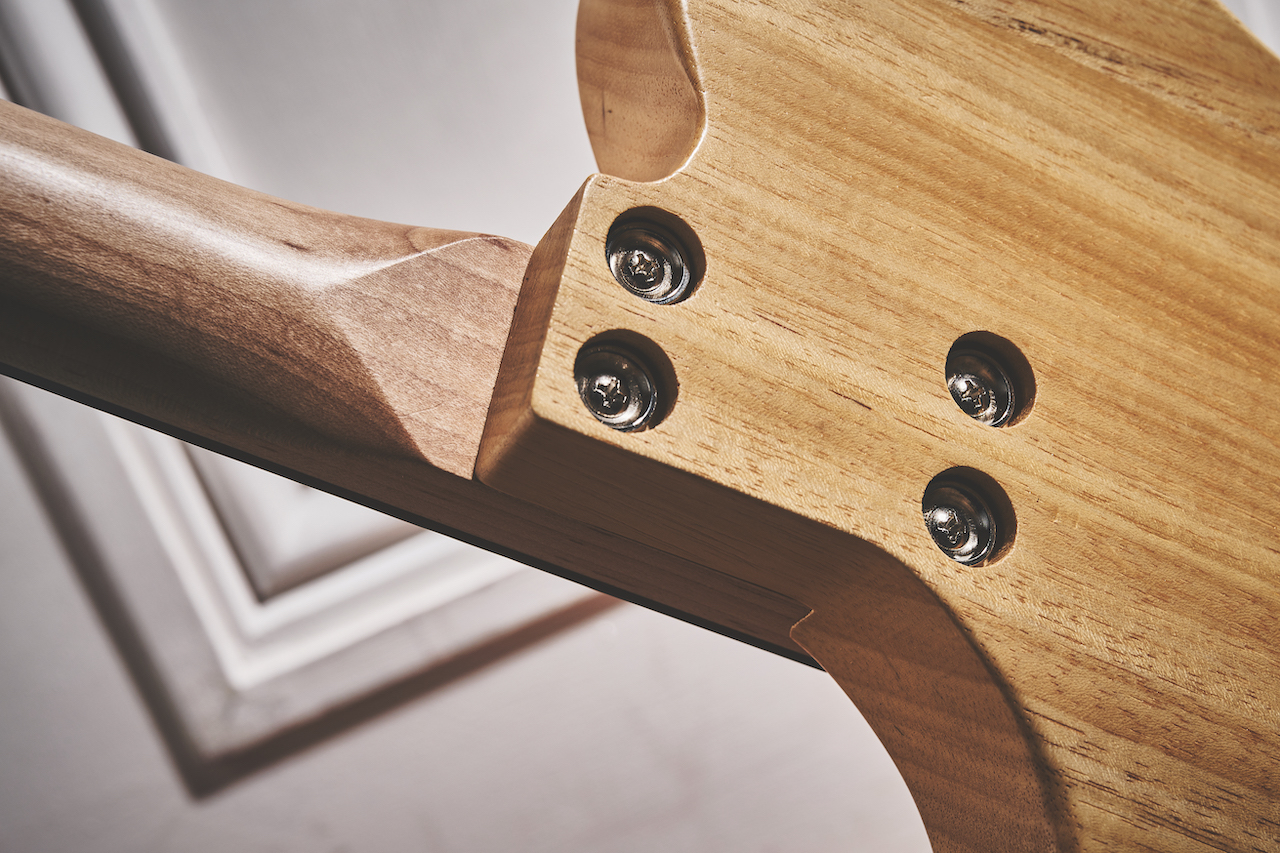
Not too many small, independent guitar-makers can list The Rolling Stones, Bob Dylan, Tom Petty and Mike Campbell, not to mention James Honeyman-Scott and Joe Ely, as owners and players of their guitars. There are plenty more, too, and that includes a relatively recent convert in Billy F Gibbons.
The brand in question is Newman Guitars whose roots take us back to the glory days and Ted Newman Jones III.
From the off, the story of Ted Newman Jones III, or just plain ‘Newman’, is a little hard to definitively pin down. He was born in Dyersburg, Tennessee, in 1949, and caught the rock ’n’ roll bug in his teens, though he found that he was better at fixing up guitars and selling them on than he was at playing them. Some sources credit Ted with bolting together ‘Blackie’ for Eric Clapton, but that’s not the story EC tells.
What seems more likely is that Newman – who had a bit of a thing for The Rolling Stones – met the band when he was invited to a show on their 1969 US tour by author Stanley Booth who was on the road researching his must-read book, The True Adventures of the Rolling Stones. Noë Goldwasser, writing for Guitar World in 1981, suggested Ted was at the fabled Altamont Speedway gig on 6 December 1969, “tossing perfectly tuned guitars to his man”.
What definitely did happen is that Ted decided to make his way to the south of France, ultimately to the Nellcôte mansion just outside Villefranche-sur-Mer in the summer of 1971 where the tax-exile Stones were recording Exile On Main Street.
He specifically wanted to show Keith Richards a Rickenbacker he’d modded that he’d tuned to open E. Apparently, Keith pulled off the low E string, tuned the guitar to open G and said, “That’s how you do it!”

Not wanting to overstay his welcome, Ted returned to the USA, possibly via Spain, where he wanted to learn some tips from the guitar makers there.
Keith later called Ted after the famous Nellcôte break-in to ask for his help in replacing his lost pieces and, after The Stones decamped to Los Angeles on 29 November to finish and mix the album, Ted temporarily moved in with Keith, set up a bench and helped him sort things out.
Keith, meanwhile, headed off to Switzerland on 26 March 1972 to pursue a ‘cure’ from his drug addiction. In May, rehearsals started in Montreux for The Stones’ June USA tour.
At some point in early 1972, then, Ted got a call from Keith asking if he wanted to go on the forthcoming tour. It seems there was no specific job in mind, but Bill Wyman places Ted as “guitar tuner” in a list of that tour’s entourage.

During the various times Ted spent with Keith, they discussed creating a five-string electric guitar for open G tuning – Keith was, of course, taking the low string off his Teles – with an idea for the body shape that combined two ellipses.
Presumably after that tour had finished on 26 July at Madison Square Garden, Ted got to work. The resulting guitar is very distinctive and was first used live by Keith on 18 January 1973 in Los Angeles, for a well-publicised Nicaragua Benefit concert.
On the 11-date Pacific Tour that followed in January and February 1973, Keith used the Newman five-string again.
“Keith Richards changed his axe after every number,” noted a journalist from Music Maker, “but as far as I could hear, it didn’t help his playing.” By our reckoning, it remains the first electric five-string electric guitar and was put to good use until Ronnie Wood gifted Keith an electric five-string guitar made by his luthier-of-choice, Tony Zemaitis.
Presumably, when he was off tour Ted was developing his craft and the guitar we know as the ‘modern’ Newman shape evolved from that first non-cutaway five‑string to a not dissimilar outline but with quite a squat, sharp-pointed cutaway (Keith is pictured with this in an early Mesa/Boogie catalogue).

Start me up
Ted Newman stayed with Keith until around 1977 or ’78. Writing for Vintage Guitar magazine, Doug Yellow Bird states: “Danny McCulloch, a close friend of Ted, recalls the birth of Newman Guitars like this: ‘In 1977, Keith Richards gave us $20,000 to set up shop in Austin, Texas. Ted and I set up in a big warehouse on 4th Street in downtown Austin.
“Soon after, Ted and I hired Bob Harris and Joel Judlin to help. We flew to Memphis the summer of 1978 to catch The Stones’ Some Girls tour, and one evening we went downtown with the band and had BBQ spaghetti. That was when I recall Bill Wyman pointed out to Ted that the word ‘Newman’ could be an ambigram if you messed with the ‘e’ and the ‘a’.’”
The Austin period proved quite successful, with the fledgling Newman guitar company making instruments for plenty of local players and international rockstars.
The ‘modern’ Newman shape was documented as a fold-out blueprint in The Rolling Stones: The First Twenty Years by David Dalton, originally published in 1981, which also includes a lengthy interview with Ted.
That blueprint of Newman’s five-string design is dated January 1980 and named the ‘Keith Richard [sic] Guitar’. It’s this style that Keith is seen playing while moonlighting from The Rolling Stones with Ronnie Wood and The New Barbarians’ tour of 1979.

Meanwhile, the reputation of Ted Newman was spreading. Archetypal guitar hero The Pretenders’ James Honeyman-Scott owned at least one, and when asked by journalist Jas Obrecht in 1981 if he cared for his guitars himself, he replied, “No, I have a guy that looks after them for me.
“On the next American tour I’m taking Ted Newman Jones, who works for Keith Richards. He wants to come with me. He builds beautiful guitars, fantastic guitars. He made some five-strings for Keith. He’s great.”
Ted had a brush with the mainstream when American-brand Chandler produced the offshore-made Austin Special in the early ’90s. The project apparently stalled over a disagreement, but it served to keep Ted’s story alive.
As Joe Gore wrote in Premier Guitar: “He subsequently hit hard times, including a prison stint and poor health, and passed away in 2016.” But that’s not the end of the story; it’s the start of another…

Not fade away
The current CEO of Newman Guitars, Jeff Smith, describes how he got involved. “After much discussion with Ted about rebuilding the company, I drove to Dyersburg, Tennessee, in late March of 2015
“Ted was diagnosed with lung cancer later that year, which changed the plan from building guitars together to preserving his vision. The new goal was learning everything Ted knew and digitally storing it in a CAD file in order to build a guitar for his approval within his lifetime. Ted approved the last prototype just two weeks before he passed away on 1 July 2016.”
We achieved what Ted Newman Jones III’s vision really was within his lifetime and to his approval
Jeff Smith
Subsequently, Jeff has been recreating versions of Ted’s guitars for the past eight years, but it’s not a conventional guitar-making venture. First of all, there’s the distinctive design, which itself evolved during the ’70s. “Back when Ted was building guitars, they weren’t the same, one after another,” Jeff tells us.
“They were evolving using techniques, tools and machines that he developed. [From that early Keith five-string,] there was the sharp cutaway that he added later in the mid-’70s, for example.
“He evolved that with a bigger, more distinct cutaway to the more refined guitar we’re familiar with today. In fact, Ted told me he couldn’t get that cutaway right and saw a mayonnaise jar lid on the ground and he literally drew around that!”

Jeff sees the modern Newman as less about the ’70s experimentation and more that its starting point is that published blueprint of the five-string.
When we reveal we’ve seen a lot of guitars over the decades, but we’ve never reviewed a five-string electric guitar, Jeff laughs: “Yes, there are lots of references to five-strings being made by Ted in the late ’70s and into the ’80s, but I think by then he was really concentrating more on six-strings. He asked me what I thought the demand for a five-string actually was today. I simply replied, ‘Where’s the five-string to demand?’
“I believe the [five-string] instrument has great merit,” Jeff continues. “Instead of just taking off the low string of a six-string, that’s a great way to learn, but I enjoy what I get out of playing a five-string – it seems to be refreshing and has more melodic functions.

“I also think as people’s hands get more stiff with age, it brings some better options. The way we do the neck, it capos beautifully, too, so there are many options. You don’t have to buy another guitar, but if you’d like to, we do make them,” he laughs.
And in a sea of similarity, the five-string marks Newman out as very different. “I was at a guitar show recently in Indiana and, you know, I was the only guitar maker there with something unique, not my version of a Fender. It was great to know we had the only five-string electric guitar for sale in the whole place! To be uniquely positioned in a crowded space has always been a desire of mine.”

All down the line
During 2023, the Newman Guitars story took another turn when Cream T’s owner, Tim Lobley, announced that a new range would be made here in the UK. “Currently, Jeff’s output is something like 30 to 35 instruments a year,” Tim told us at the start of the year, “of which a small proportion, maybe three or four, are five-strings.
“Jeff has been down the route of going to retailers and making a few more guitars at times, but Newman Guitars is mainly an in-house boutique builder. That said, Jeff doesn’t make the guitars; they’re made in partnership with various USA boutique makers. One [of those makers] might make four or five a year, someone else might make just one.
“So, while the shape does stay the same, the overall output – between those pre-determined boundaries – is actually quite eclectic and that is a function of people custom-ordering them and then different makers custom-making them. Jeff will continue to do that eclectic mix.
“Our plan is to standardise it a little more. It’s an extension of what Jeff has been doing with Newman in the USA; we’re just doing it here in the UK on a larger scale.”

“Yes, what we do here is totally one-off in most cases,” Jeff continues. “That’s the way we’ve always been because we’ve always been able to sell whatever we build. Several gifted luthiers throughout the USA have built for us including Jacob Harper, Robert Mondell, Saul Koll, Greg Platzer, Chris Morell, Mike Flaherty and Bill Harden. They have all contributed to what they think best represents their vision for what a collaboration with Ted may have looked like.
“Jacob Harper, however, started working with Ted and I in late December of 2015 and he was a critical part of digitally preserving the design elements that were important to Ted.”
So when will we see the new UK Newman guitars? And does it mean, after all these decades, that we’ll finally get our hands on a five-string?
“We have full digital files and rough bodies created,” Tim told us in early January. “Once we’re back from NAMM we’ll see a ‘skeleton’ guitar for proof of concept. One will come to me, the other will go to Jeff at Newman HQ. We’re hoping we’ll be 90 per cent there as we’re not designing something new.
“Once we’ve evaluated that, we’ll create what will be a final production prototype, then [it will go] into production. So, although we don’t have a guitar in our hands at the moment, we’ve done the hard work.

“We plan to start with the five-string,” Tim continued, “as it’s the simplest guitar, a workhorse to launch the concept. Then we should have a version of the guitar Billy Gibbons is playing, a honeycomb-chambered single-pickup ‘Junior’ that we’ve had a lot of interest in already. Then we’re hoping to drop the six‑string in the middle and that should be quite straightforward to do.”
Cream T will be making the pickups, including those for the five-string, and there’s even talk of pickup-swapping versions in the not too distant future.

“You know, after we’d built the first guitar to Ted’s specs I showed it to him, he could have just thrown it out the window,” Jeff reflects.
“Instead, he looked at it and said, ‘It’s…’, and he’s spinning it around, ‘It’s… a Newman!’ It was a great moment because it’s something we achieved – what his vision really was – within his lifetime and to his approval.”
- For more information on the UK-made Newman, visit Cream T.







